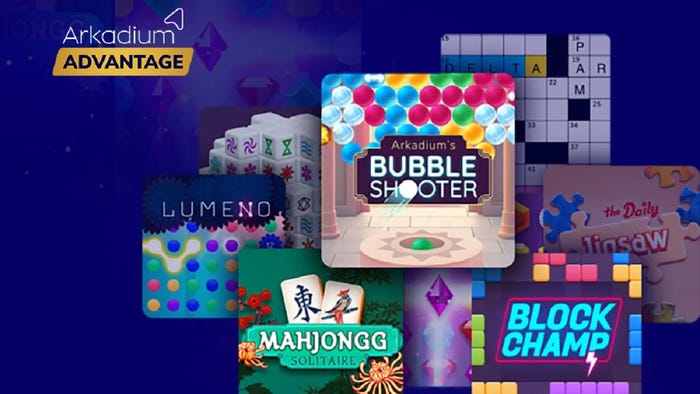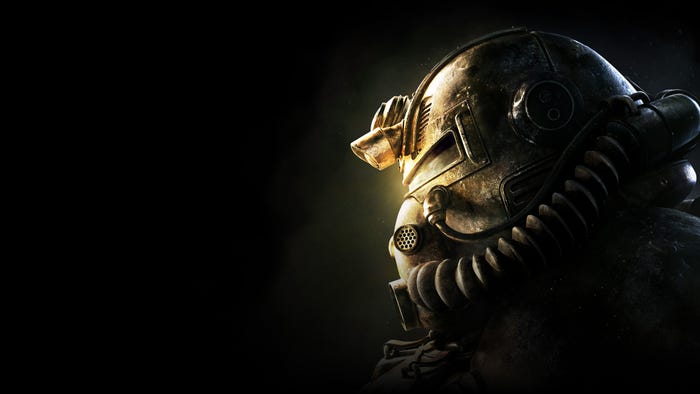Kaleida tasks players with shooting down incoming ships, but does so through turning the universe with a crystalline controller that feels right out of an alien starship.

The 2020 Game Developers Conference will feature an exhibition called Alt.Ctrl.GDC dedicated to games that use alternative control schemes and interactions. Gamasutra will be talking to the developers of each of the games that have been selected for the showcase.
Kaleida tasks players with shooting down incoming ships, but does so through turning the universe with a crystaline controller that feels right out of an alien starship.
Gamasutra had a chat with the team behind Kaleida to talk about the ideas that went into creating this striking controller, the challenges of aiming for a simple control scheme, and how the gameplay naturally flowed from the abilities of the controller's design.
Ship builders
Mora-Davison: My name is Benjamin Mora-Davison, and I am a designer and programmer on Kaleida. I’ve worked in the industry as a Unity Developer for the past few summers, but my true passion is game design. I currently study game design as a student at Sheridan College, and in my spare time I develop and design games. Working on games such as Kaleida and Recalculating (a game that explores the dangers of ridesharing) has also granted me the opportunity to design and showcase my work at GDC and the Montreal Independent Game Awards, which is a big step for me as I build my career as a designer.
McKague: I’m Justin McKague, and I am also a designer and programmer on Kaleida. I started making small games with a friend in late high school, and fell in love with the experience of making games. I started in Sheridan’s Game Design program right out of high school, and now I regularly participate in game jams and work on some personal games, like Kaleida, in my spare time.

Arroz: My name is Mary Arroz, and I am a controller, game, and level designer for Kaleida. As with everyone else on the team, I’m also a game design student at Sheridan. Prior to my time there, I finished an English and Film Studies double degree at the University of Calgary. During my final year, I started dabbling with interactive projects as my higher-level courses allowed us to use creative projects for our assignments. I ended up using Flash to create interactive comics, along with experimenting in Twine and Ren’py for branching narratives. I learned I loved designing interaction-based experiences, and eventually moved to Ontario for school, where I’ve been making and showcasing games for the past three years.
Ma: My name is Xinran Ma. I am a controller and game designer on Kaleida. In addition, I am also responsible for graphic design, motion graphics, and visual implementation in the project. While I am a student studying game design, I enjoy making games on my own time because I want to bring my own unique experiences into the game space. I mostly enjoy showcasing the games I've made whenever I am able - mostly across the Toronto area. However, just this year, I've also had the opportunity to do so at Montreal International Games Festival and now Alt Ctrl GDC as well.
Tilt & pump controls
McKague: When we had the opportunity to show Kaleida at a local Unity meetup, we had to give people the rundown of our control scheme very fast. The controls are rather simple, so it is a quick process to explain how to play. “Tilt to rotate the environment” and “Pump to shoot a laser horizontally and blast enemies”. We also designed the main menu to be a playground to learn the controls and to become familiar in a short time.

Crystal ball
Arroz: Our first controller prototype was made using a Styrofoam ball of approximately the same diameter. After testing the controller and enjoying the feel and affordance of the ball, we went to the craft store planning to repurpose or create something more appropriate for longer-term use. As this was during the holiday season, we stumbled upon these clear, plastic ornaments which were of comparable size to our prototype materials. The plastic was sturdy enough to be pumped without breaking, and we were immediately interested with how the controller would look using clear material - we really loved the idea of allowing people to see the wiring. After putting our materials together for the first test, we knew we had something aesthetically unique!
On controlling the environment and not the ship
Mora-Davison: In addition to providing strong visual feedback, giving the player control of the game space forces them to think from a different perspective. In our initial designs, the player actually rotated an avatar, but the orientation of the player avatar and controller eventually mismatched and caused dissonance. So, we shifted control of the rotation to the environment. This not only reduced dissonance, it also opened up new design opportunities and created a unique play aesthetic.
Designing gameplay around the controller's feel
McKague: Very soon after creating the first prototype of our controller, we made the connection to involve rotation; it just felt natural. We originally thought about 360 degrees of movement where the player could rotate freely, however, rotating freely with the controller didn’t feel quite right. In a meeting, we decided that tilting from side-to-side felt more comfortable than precisely holding to get the right angle, so we came up with the idea of using the angles of geometric shapes to clamp the player’s rotation.
 The tools to create Kaleida
The tools to create Kaleida

Mora-Davison: Kaleida was developed with Unity, and uses a Makey Makey to process input from the controller into keypresses. That’s pretty much it; we stuck with tools and technology we had used previously in order to bring out the best of the team.
Ma: The controller is made of entirely of wood, acrylic plastic, cloth, and wire. We wanted to use materials that had good structural integrity and fulfilled its purpose without requiring us to have any outstanding skills in engineering. Woodworking is none of our strong suits, so we utilized preexisting objects and put them together to spark intrigue.
Intriguing players with the look of the controller
Ma: Kaleida doesn't look like anything else - its shape is its own, which is what we think stirs a reaction amongst those who approach it. We want players to have that sense of curiosity before playing our game. We've briefly showcased this game in public at a Unity Developers meetup in Toronto, and a number of people exhibited this exact curiosity we hoped to elicit from them. We hope we can attract even more players on the GDC floor.
Learning by watching
Arroz: We really went into this project wanting to create something with very simple mechanics and input, trying to create a controller people could learn to use by watching. This was not, however, without its hiccups.
In one iteration, our controller’s central ball (along with the affixed rods) would naturally twist because of how it was fastened. Considering our game’s rotation mechanic and the central piece visually askew, a few people assumed that the controller worked by twisting, rather than tilting. We fixed the pump so it could no longer rotate, but we understand that some people might have that assumption due to our game’s mechanics.
The majority of players pick up how to use the controller pretty quickly, though it takes some concentration to master. The slight cognitive disconnect between the controller’s tilt and the game space’s rotation is where Kaleida’s challenge comes from, the controller prompting a wholly different game experience than when played with a keyboard or gamepad.
About the Author(s)
You May Also Like









